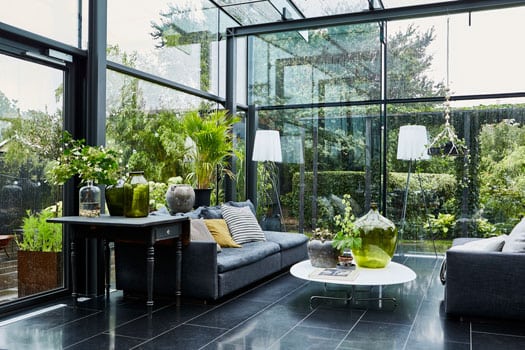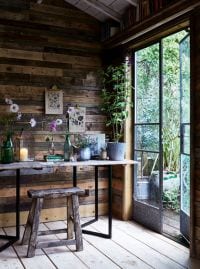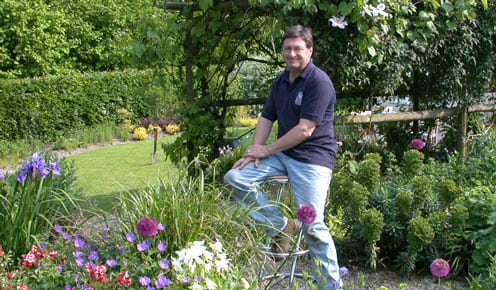In need of a new kitchen floor, but unsure what material to opt for? There are lots of options, but a few important things to consider too. “Fitting out a kitchen is very exciting, but often you forget to think about the flooring, which is likely to be one of the largest surfaces in the room, so its selection deserves careful attention,” says Jordan Reuben, from Canadian reality series, The Property Brothers.
First and foremost, there’s your budget to consider, but keep in mind that it’s not necessarily just a question of how much the floor will initially cost to buy and fit – some types of flooring will require more specialist cleaning, for example, or may be prone to damage and wear and tear, meaning further costs down the line to replace or repair. Your choice will need to be a practical fit with your lifestyle too and, of course, you need to like it!
As Sian O’Neill, head of marketing at Topps Tiles (toppstiles.co.uk), notes: “As the hub of the home, kitchen design is of the utmost importance to homeowners, so it’s important to select flooring that is not only beautiful and hard-wearing but will stand the test of time.” Here’s a look at three key options…
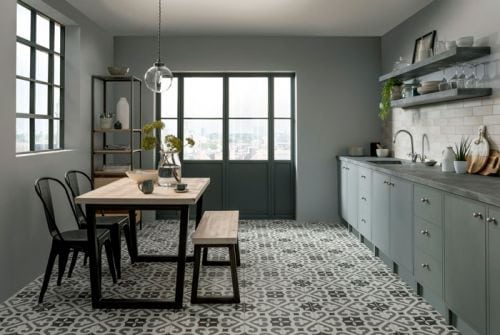
1. Tiles
“Tiles are an excellent choice, as they are durable, design-led and able to stand up to the demanding conditions of kitchen spaces, with high traffic, potential spills and food mess,” says O’Neill. “Natural stone tiles provide a cosy and timeless look, especially for those living in an old country-style house. It’s worth keeping in mind that due to their porous surfaces, these types of tiles will need additional care before and after laying, to ensure they are sealed enough to last in humid areas, and to keep their finish in top condition. As long as you’re happy to maintain and look after them correctly, then the final result is luxurious and homely.” Reuben adds: “Stone flooring is available in a wide range of colours, sizes and textures, but you must ensure the stone is sealed to keep it in top condition. Remember, limestone is porous, so it will naturally suffer wear and tear. If you’re looking for a hard-wearing and totally hassle-free option, porcelain tiles are great. It can be made to replicate the look of wood or concrete. The tiles are often highly durable and fit well in a high-traffic environment.”
If you’re lusting over a gorgeous slate or marble floor – but your budget doesn’t stretch to the real thing, there are lots of lookalike tiles out there. “If natural stone isn’t the right fit for your home, there are plenty of additional options that offer the same aesthetic, but without the associated maintenance. Consider stone-effect tiles as these are waterproof, which means they’re easier to maintain and, thanks to modern technology, can now be made to look identical to the real thing,” says O’Neill. Wood-effect tiles can also offer a far cheaper alternative to real wood flooring (easier to lay and clean, too).
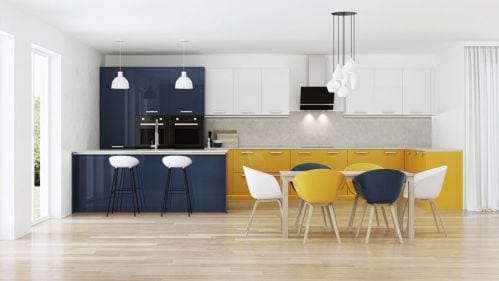
2. Laminate
Want the look of real wooden boards, but that’s not a realistic option budget-wise? There’s good reason why laminate flooring is a trend that’s stuck around. “Laminate wood floor is as popular as ever,” says Reuben. “It’s very modern and looks fantastic. As long as the product is factory sealed, those wine stains will just wipe away.” Josh Ashby, of UK Flooring Direct (ukflooringdirect.co.uk), adds: “Good quality laminates make a great floor for the kitchen, allowing for that authentic wood look without the drawbacks. Easy to install and maintain, homeowners can enjoy an affordable, stylish floor that will stand the test of time. More and more are now water resistant, adding to their appeal, and are suitable with underfloor heating.” Reuben notes that long laminate boards “can make any room feel bigger, whether it be dark or light flooring”, plus, “laminate is supplied in planks that are generally easy to fit, even for the novice!”
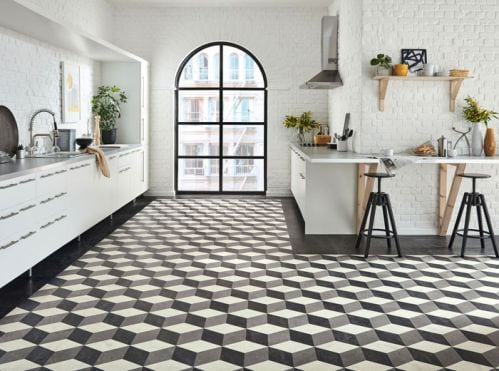
3. Luxury vinyl
“Modern vinyl is becoming increasingly popular as a cost-effective option to tiles and laminate. It comes in all different patterns, and good-quality vinyl can be very hard-wearing,” says Reuben. Sophie Hautekeete, of Quick-Step (quick-step.co.uk), agrees: “Luxury vinyl is undoubtedly the floor of the moment, offering that perfect blend of good looks, durability and ease of maintenance. Our vinyl planks have an embossed surface, which means the texture on the top surface matches the design, to create fantastic interpretations of the real floor it imitates.” A big part of the appeal is the scope of designs available. “Cushion, or sheet vinyl, has enjoyed a significant rise in popularity over the past five years, as modern methods of construction mean that wood and tile-effect designs look and feel like the real thing, with knots and grouts adding texture and interest,” says Stuart Reeves, Avenue Floors (avenuefloors.co.uk). “Design choice is almost unlimited, which means this type is often the go-to kitchen floor for those looking for performance, style and value.”

